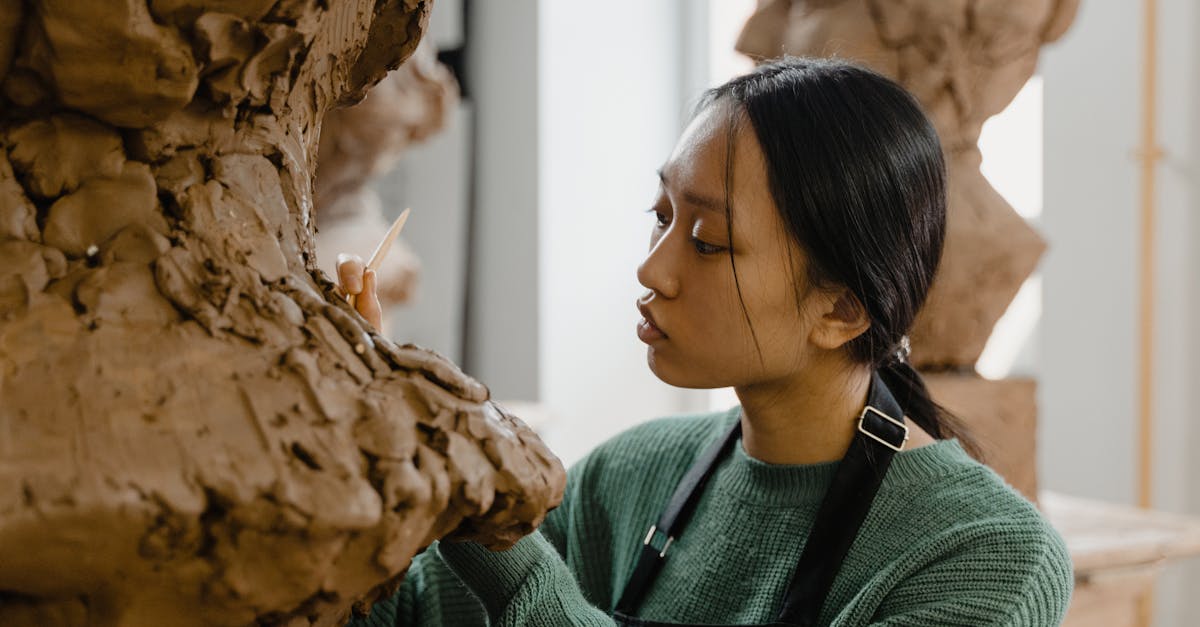Learning 3D modeling has never been more accessible with local classes popping up across cities and communities. Whether someone’s interested in game design, architectural visualization, or product development, finding the right 3D modeling course can jumpstart their creative journey.
Local 3D modeling classes offer hands-on experience with industry-standard software like Maya, Blender, and 3DS Max. Students benefit from face-to-face interaction with experienced instructors who can provide immediate feedback and personalized guidance. These classes often combine theoretical knowledge with practical exercises, helping learners master the fundamentals while building their portfolios.
3D Modeling Classes Near Me
Real-Time Feedback and Support
Local 3D modeling classes offer immediate instructor feedback during modeling sessions. Students receive personalized guidance on their techniques, software navigation methods, and project-specific challenges. The face-to-face interaction enables quick problem resolution and accelerates the learning process through direct demonstration of solutions.
Hands-On Equipment Access
Students gain access to professional-grade hardware and software without additional investment. Local facilities provide:
- High-performance workstations
- Latest versions of industry-standard 3D modeling software
- Specialized input devices like 3D mice and drawing tablets
- Rendering farms for complex project completion
Networking Opportunities
Local classes create valuable networking connections within the 3D modeling community. Students connect with:
- Fellow aspiring 3D artists
- Professional mentors
- Industry experts
- Local studios and companies
Structured Learning Environment
In-person classes maintain a focused learning atmosphere through:
- Fixed schedules that promote consistent practice
- Progressive curriculum development
- Group critique sessions
- Collaborative project opportunities
Portfolio Development Support
Local instructors provide guidance on building professional portfolios through:
- Industry-relevant project assignments
- Regular portfolio reviews
- Technical presentation skills
- Documentation of modeling processes
Local Industry Insights
Students gain exposure to regional market demands and opportunities through:
- Guest speakers from local studios
- Information about area-specific job requirements
- Regional industry trends
- Local client project examples
- Local maker spaces
- 3D printing facilities
- Creative coworking environments
- Technology meetups
| Resource Type | Typical Availability | Average Cost Savings |
|---|---|---|
| Software Access | 20-40 hours/week | $1,500/year |
| Hardware Use | 15-30 hours/week | $3,000/setup |
| Mentor Support | 8-12 hours/week | $2,400/month |
| Facility Access | 30-50 hours/week | $800/month |
Types of 3D Modeling Programs Taught
Local 3D modeling classes feature diverse software options tailored to different skill levels and industry requirements. The curriculum typically includes both professional-grade applications and accessible entry-level programs.
Industry-Standard Software
Professional 3D modeling classes prioritize instruction in market-leading software platforms:
- Autodesk Maya: Creates high-end 3D assets for film animation visual effects character modeling
- 3DS Max: Specializes in architectural visualization product design game development
- ZBrush: Focuses on digital sculpting character design detailed texturing
- Cinema 4D: Delivers motion graphics broadcast design architectural visualization
- Houdini: Generates procedural modeling advanced visual effects simulations
| Software | Primary Use Cases | Learning Curve |
|---|---|---|
| Maya | Animation Film VFX | Advanced |
| 3DS Max | Architecture Games | Intermediate |
| ZBrush | Character Design | Intermediate |
| Cinema 4D | Motion Graphics | Intermediate |
| Houdini | VFX Simulation | Advanced |
Beginner-Friendly Options
Entry-level classes introduce accessible 3D modeling software:
- Blender: Open-source platform with comprehensive modeling animation rendering tools
- SketchUp: Intuitive interface for architectural modeling interior design
- Tinkercad: Browser-based program for basic 3D modeling printing
- Fusion 360: Integrated CAD CAM CAE platform with free educational licenses
- Meshmixer: Simple tool for 3D mesh editing preparation for printing
- Built-in tutorials documentation community support
- User-friendly interfaces with standardized workflows
- Free or affordable licensing options for students
- Compatible file formats for industry-standard software
- Basic features that align with professional tools
What to Look for in a 3D Modeling Course
Selecting the right 3D modeling course requires evaluating several key factors that impact learning effectiveness. A comprehensive assessment of these elements ensures students receive optimal value from their educational investment.
Class Size and Instructor Support
Optimal 3D modeling classes maintain a student-to-teacher ratio of 10:1 or lower for personalized attention. Small class sizes enable instructors to provide detailed feedback on technical aspects such as topology optimization mesh modeling techniques. Regular one-on-one consultations during class sessions address specific challenges in:
- Model creation workflows
- Technical troubleshooting
- Software-specific questions
- Individual project guidance
- Portfolio development strategies
- Live modeling demonstrations with real-time practice
- Project-based assignments that mirror industry workflows
- Interactive workshops focusing on specific techniques
- Collaborative group projects simulating studio environments
- Access to professional workstations equipped with:
- High-performance graphics cards
- Multiple monitors
- 3D navigation devices
- Rendering capabilities
- Industry-standard software licenses
| Learning Component | Recommended Time Allocation |
|---|---|
| Hands-on Practice | 70-80% |
| Theory Lectures | 15-20% |
| Reviews & Feedback | 10-15% |
In-Person vs Online 3D Modeling Classes
Modern technology enables students to choose between traditional classroom settings and virtual learning environments for 3D modeling education. Each format offers distinct advantages that cater to different learning styles and scheduling needs.
Traditional Classroom Experience
Traditional classroom settings deliver hands-on learning experiences with direct instructor supervision. Students access professional workstations equipped with calibrated displays monitors dual graphics cards. The physical environment promotes:
- Face-to-face collaboration with peers on group projects
- Immediate technical troubleshooting from instructors
- Access to specialized hardware like 3D scanners graphic tablets pen displays
- Real-time demonstrations of modeling techniques
- Physical model reviews with tactile feedback
- Structured schedules that maintain learning momentum
- Direct networking with local industry professionals
- 24/7 access to recorded lectures tutorials
- Learning at individual pace and preferred times
- Cost savings on commuting equipment rental
- International instructor expertise exposure
- Cloud-based file sharing collaboration tools
- Regular software updates without installation delays
- Extended project deadlines for work-life balance
- Global networking opportunities with students
- Discussion forums for ongoing peer support
- Virtual reality integration for model visualization
| Learning Format | Average Cost (3-month course) | Weekly Time Commitment | Student-Teacher Ratio |
|---|---|---|---|
| In-Person | $2,500 – $4,000 | 12-15 hours | 1:10 |
| Online | $1,200 – $2,500 | 8-12 hours | 1:25 |
How to Find the Best 3D Modeling Classes in Your Area
Locating quality 3D modeling classes involves exploring multiple educational channels based on specific learning requirements. Educational institutions across regions provide varying levels of instruction with different scheduling formats costs.
Community Colleges and Technical Schools
Community colleges offer accredited 3D modeling programs at competitive rates ranging from $85-200 per credit hour. These institutions provide structured semester-based courses with access to computer labs equipped with industry-standard software like Maya AutoCAD. Students receive transferable credits toward degree programs while maintaining flexible evening weekend schedules designed for working professionals.
| Feature | Community College | Technical School |
|---|---|---|
| Cost per Credit | $85-200 | $150-300 |
| Program Length | 16 weeks | 12-24 weeks |
| Class Size | 15-20 students | 10-15 students |
| Software Access | On-campus labs | Dedicated workstations |
Private Training Centers
Private training centers specialize in focused 3D modeling instruction with intensive boot camp-style programs lasting 8-12 weeks. These facilities feature:
- Dedicated workstations with dual monitors professional graphics cards
- Small class sizes limited to 8-12 students per instructor
- Industry-experienced instructors with current project portfolios
- Flexible payment plans monthly installment options
- Career services including portfolio reviews job placement assistance
- Custom scheduling options including evening weekend sessions
- Direct connections to local industry partners studios
- Regular workshops with visiting professional artists
Private centers typically charge $1,500-3,000 for comprehensive certification programs offering hands-on training in multiple software platforms.
Cost and Time Investment
Local 3D modeling classes range from $300 to $3,000 per course based on duration, curriculum depth, and institution type. Community colleges offer semester-length programs at $500-$1,200, while private training centers charge $1,500-$3,000 for intensive boot camps.
| Program Type | Cost Range | Duration | Hours per Week |
|---|---|---|---|
| Community College | $500-$1,200 | 12-16 weeks | 6-9 hours |
| Private Training Center | $1,500-$3,000 | 8-12 weeks | 12-15 hours |
| Art Schools | $2,000-$3,000 | 16-20 weeks | 9-12 hours |
Students dedicate 6-15 hours weekly to coursework, including:
- Attending 2-3 instructor-led sessions
- Completing 3-4 hours of supervised lab work
- Practicing 2-3 hours independently on assignments
- Participating in 1-2 hours of project reviews
Additional costs include:
- Software licenses ($0-$200 monthly)
- Course materials ($50-$150)
- Hardware peripherals ($100-$300)
- Portfolio development tools ($50-$100)
Many institutions provide flexible payment options:
- Monthly installment plans
- Early registration discounts
- Equipment rental programs
- Student software licenses
- Financial aid for accredited programs
- Industry-recognized certification
- Professional portfolio development
- Network connections with local studios
- Access to job placement services
- Advanced software proficiency
Career Opportunities After Completing 3D Classes
3D modeling graduates access diverse career paths across multiple industries. Here’s a breakdown of key employment opportunities and salary ranges:
| Career Path | Entry-Level Salary | Senior-Level Salary |
|---|---|---|
| Game Developer | $45,000 | $120,000 |
| Architectural Visualizer | $42,000 | $95,000 |
| Product Designer | $48,000 | $110,000 |
| Animation Artist | $40,000 | $105,000 |
| VFX Artist | $45,000 | $125,000 |
Gaming Industry Roles
- Create character models for AAA video game titles
- Design environmental assets for mobile games
- Develop user interface elements for gaming platforms
- Animate character movements for interactive experiences
- Model props for virtual reality applications
Architecture and Design Fields
- Generate photorealistic building renderings
- Create 3D walkthroughs for real estate presentations
- Model interior design concepts for clients
- Develop landscape visualization projects
- Produce construction documentation models
Entertainment and Media Positions
- Model characters for animated films
- Create visual effects for television shows
- Design props for commercials
- Develop assets for streaming content
- Generate models for virtual production sets
Manufacturing and Product Design
- Design consumer products for mass production
- Create prototypes for industrial equipment
- Model automotive components
- Develop medical device visualizations
- Generate packaging designs for retail products
- Model assets for augmented reality experiences
- Create 3D content for virtual training programs
- Design components for 3D printing applications
- Develop models for scientific visualization
- Generate assets for educational simulations
Each career path requires specific software proficiency paired with industry knowledge. Employment opportunities expand with professional certifications additional skillsets like texturing UV mapping or rigging.
Creative Vision
Taking 3D modeling classes locally opens doors to endless creative and professional possibilities. Students gain invaluable hands-on experience with industry-standard software while building meaningful connections with instructors and peers. Whether through community colleges private training centers or specialized institutes these courses provide the perfect blend of technical knowledge and practical skills.
The investment in local 3D modeling education pays off through career opportunities across multiple industries. With the right combination of dedicated learning professional guidance and practical experience anyone can transform their creative vision into stunning 3D reality.



